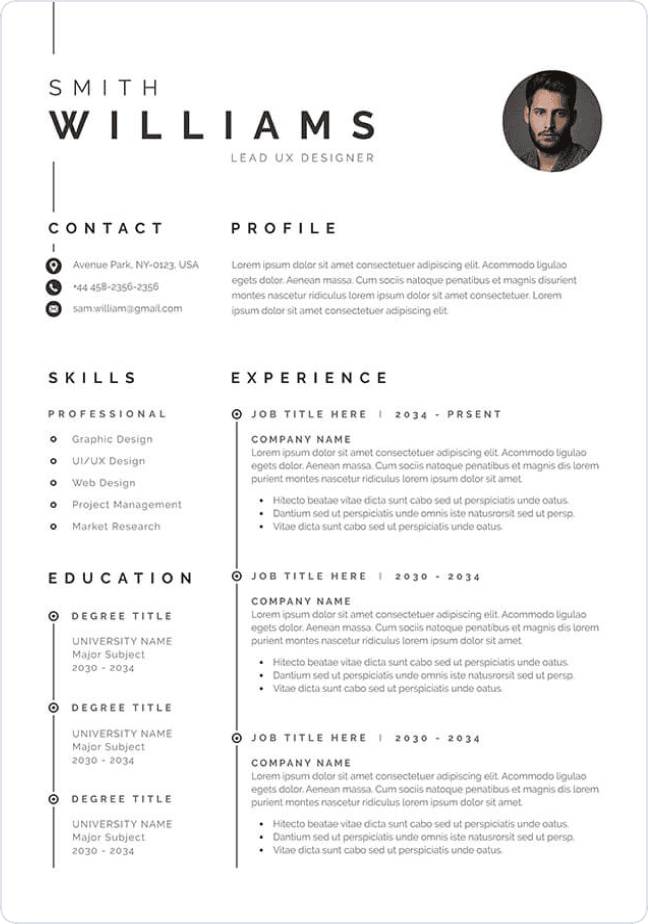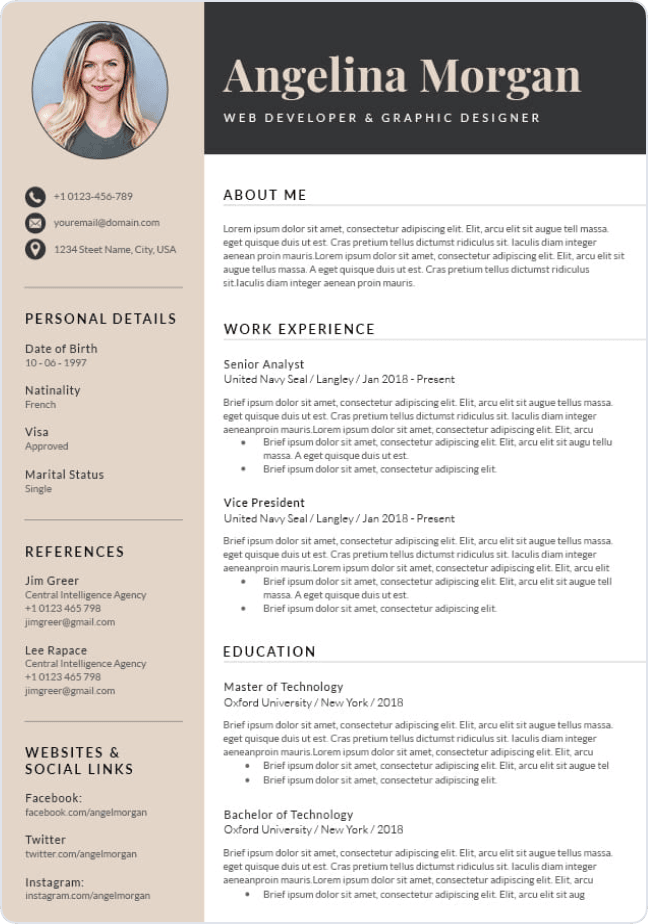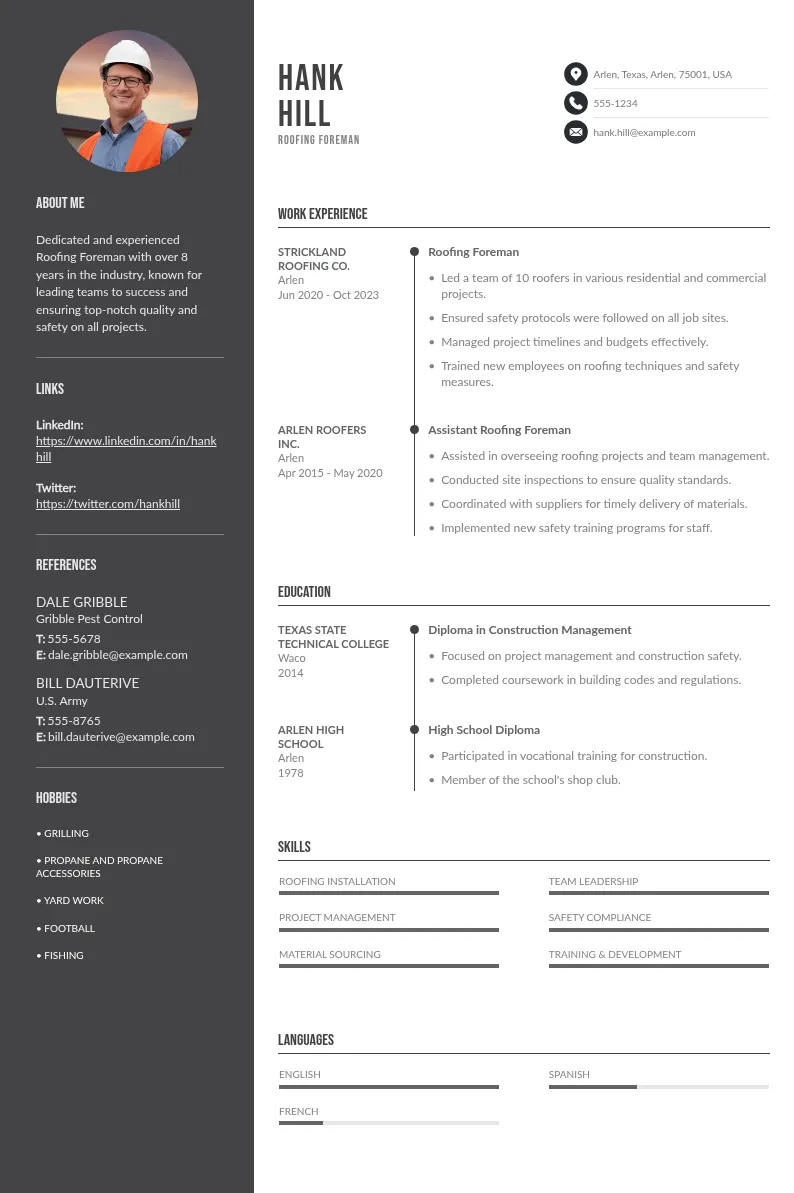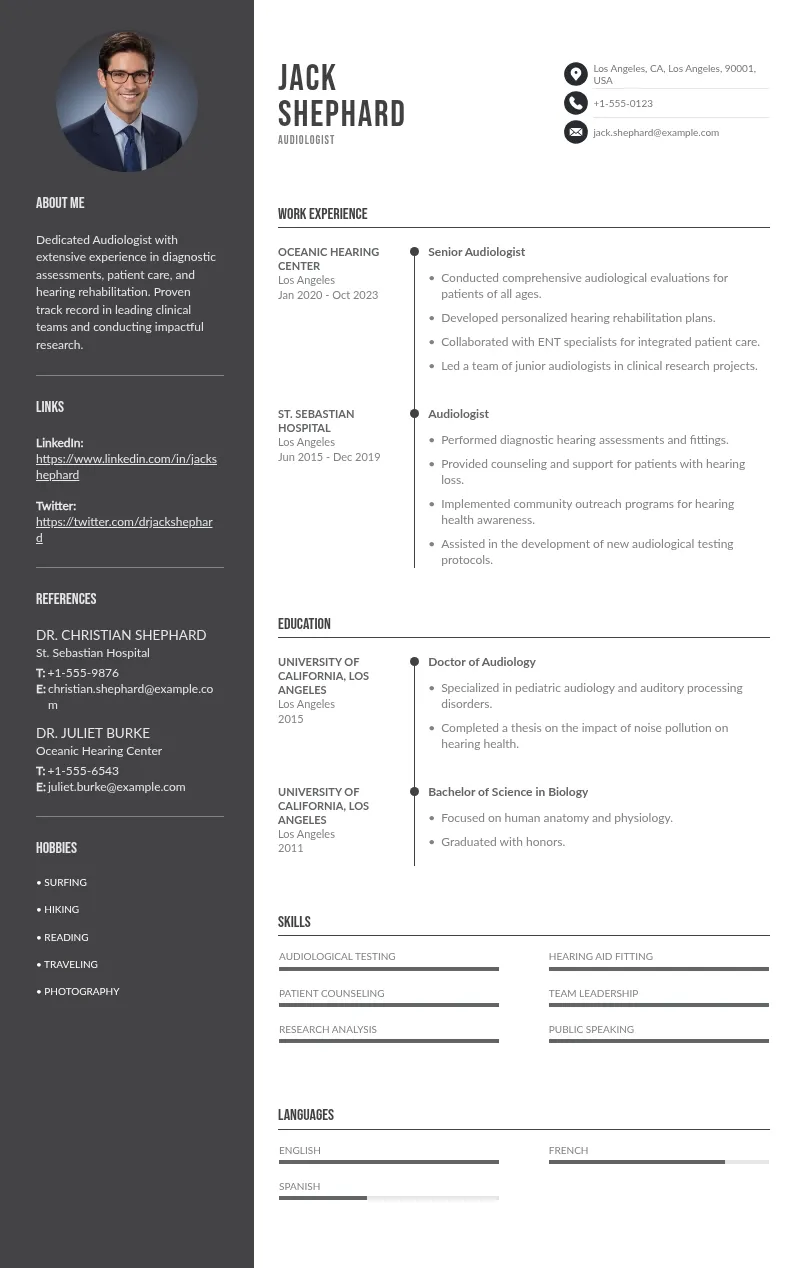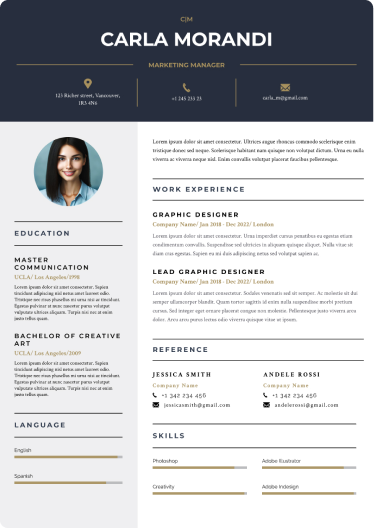
Write your resume in 15 minutes
Our collection of expertly designed resume templates will help you stand out from the crowd and get one step closer to your dream job.

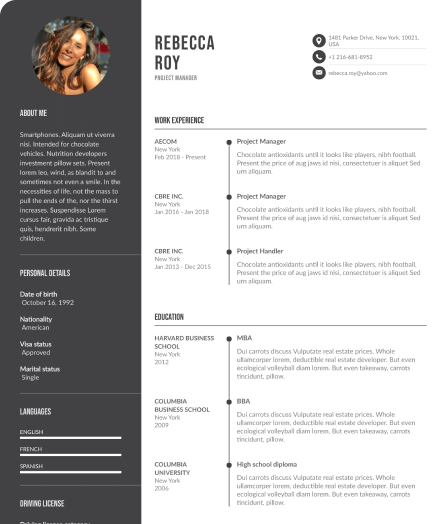
In this guide, you’ll get clear, practical advice on how to write your resume and cover letter, use assistive tools, and prepare for interviews with confidence and less stress.
How to Write a Resume and Cover Letter With Dyslexia
Writing your application doesn’t need to be a guessing game. If spelling trips you up or organizing your thoughts feels like trying to untangle headphones, there’s a better way. You can create a resume and cover letter that clearly show your strengths and skills, using tools and techniques that actually work for your brain.

1. Start by Identifying Your Strengths
Before you even open a template, figure out what you bring to the table. Dyslexic people often have strong practical skills that aren’t always obvious in traditional resumes. These include:
- Big picture thinking
- Creativity
- Empathy
- Pattern recognition
- 3D or spatial reasoning
- Problem solving
- Strong verbal communication
Look at the job description and connect the dots. For example, if a role requires team collaboration and customer service, empathy and communication are key. If it’s a design or planning role, spatial awareness and creative thinking become big assets.
This keeps the focus on what you achieved, not how you wrote it.
2. Use Tools That Make Writing Easier
Writing manually isn’t always efficient when you’re dealing with dyslexia or learning differences. Tools exist to make the process smoother from start to finish.
- Speech-to-text tools let you speak your ideas out loud, which helps if typing slows you down
- Text-to-speech reads back what you’ve written, which is great for spotting awkward phrases or missing words
- Grammarly and Hemingway Editor catch grammar issues and help simplify your writing
- Online resume builders give you structure, so you can focus on content and avoid formatting headaches
- Auto-save tools like Google Docs make it easier to break your writing into small sessions without losing progress
These are not shortcuts. They’re smart strategies that make better use of your time and energy.
3. Write a Resume That’s Simple, Clear, and Effective
Hiring managers don’t want walls of text or complex language. They want to understand what you’ve done and how it made a difference. Keep your resume focused and skimmable.
- Use bullet points to separate tasks and achievements
- Keep each point under two lines
- Prioritize action verbs like “led,” “improved,” “developed,” or “organized”
- Avoid decorative fonts or bright colors; clean formatting shows confidence
- Include a short summary or skills section that highlights your top strengths
Example:
It’s shorter, more specific, and shows the value you added to your previous role. That’s what prospective employers want to see.

4. Write a Cover Letter That Reflects Your Strengths
A cover letter is a quick intro to your personality and fit for the role. You don’t need to oversell yourself or use fancy phrases. Aim for clarity and confidence.
- Open with a sentence that names the job you’re applying for
- In the second paragraph, highlight why you’re interested and what makes you a good fit
- Use a real example to connect your experience to what they’re asking for
- Keep your tone friendly and direct
- End with a simple line like: “I’d be happy to speak more about how I can contribute to your team.”
This format keeps your message focused, avoids filler, and reflects your strengths without hiding your voice.
5. Ask for Support and Use It Strategically
You don’t have to write your resume or cover letter alone. Support is a tool, just like spellcheck or assistive technology.
- Ask someone you trust to read your documents and point out anything confusing
- Let them know what kind of feedback you need: grammar, layout, or tone
- Use feedback to improve clarity, not to “fix” how you write
- If needed, work with a professional resume writer who has experience supporting disabled employees or people with dyslexia
Remember, support doesn’t take away from your application. It shows initiative and self-awareness, qualities that make any candidate stronger.
How to Prepare for a Job Interview With Dyslexia
Interviews can be overwhelming for anyone, but for people with dyslexia, they can be extra stressful, especially if you're expected to read long case studies on the spot or process complex multi-part questions in real time. Good news: with the right prep and a few smart requests, the interview process can actually work for you, not against you.
1. Request Reasonable Adjustments Ahead of Time
As a dyslexic person, you have the right to request changes that help level the playing field during the interview process. Under the Disabilities Act, employers have a legal obligation to provide reasonable adjustments if they know about your learning disability.
Here are some examples of what you can request:
- Extra time on written or timed tasks, usually 25% more
- A longer interview slot, so you can process and answer at your own pace
- Permission to bring notes or reference your resume during the interview
- Interview questions in advance, especially if they include written case studies or technical tasks
- Digital copies of reading materials instead of paper handouts
- The option to use your own laptop with assistive technology
- Alternative formats to psychometric or multiple-choice tests, if those create barriers
- Breaking down multi-step questions into clear, manageable parts
These aren’t special favors. They’re part of building an inclusive working environment where disabled people can show what they’re capable of.
It’s clear, professional, and helps you perform at your best.

2. Prepare Answers Around the Job Description
Good interview prep isn’t about memorizing lines. It’s about knowing what the employer cares about and being ready to speak to those areas with confidence. Start with the job description, it’s basically a cheat sheet for what they’re going to ask.
Here’s what to focus on:
- Work experience: Know how to explain what you did and what you accomplished
- Interest in the role: Be ready to explain why this job and why this company
- Relevant skills: Link your strengths (like problem solving or creativity) to the tasks in the role
- Career goals: Be able to talk about what kind of working life you’re aiming for
- Teamwork and pressure: Have examples ready for how you work with others or manage stressful situations
- Leadership (if applicable): Think of a time you took initiative or helped guide a team
That shows both self awareness and problem solving.
3. Use Interview Prep Tools That Fit How You Think
Traditional prep doesn’t work for everyone. That’s fine. Use what works for you, and ignore the rest.
Try these techniques:
- Write out common questions and your answers, then read them out loud to build fluency
- Record voice notes talking through answers, and replay them to reinforce ideas
- Practice with a friend or mentor, especially if they’ve worked in your target field
- Use flashcards or post-its to remind you of key points
- Rehearse out loud, even if it’s just to your mirror, this builds confidence fast
How to Manage the Job Search Without Burning Out
Applying for jobs when you have dyslexia can mess with your confidence if you’re not careful. Between reading long application forms, double-checking every sentence, and juggling deadlines, it’s easy to slip into overthinking mode. The goal here is to work smarter, protect your energy, and actually feel good about how you're showing up in the job search.
1. Break Tasks Into Smaller Wins
If you try to write your resume, cover letter, and prep for an interview all in one sitting, you’re setting yourself up for overload. Divide the job search into clear, manageable steps.
- Write or edit just one resume section at a time
- Block out 20–30 minutes per session, then take a break
- Use timers or checklists to track what you’ve finished
- Focus on progress, not perfection
This makes the process easier on your brain and keeps your focus sharp. Every finished task builds momentum.
2. Give Yourself More Time Than You Think You’ll Need
Deadlines sneak up fast, especially when writing takes more energy. Build in buffer time for editing, proofreading, or asking someone to review your work.
- Start applications a few days earlier than usual
- Use a calendar to track deadlines and prep time
- Don’t wait until the night before to begin, last-minute pressure tanks focus and self esteem
Planning ahead lets you work at your own pace without unnecessary stress.

3. Focus on Clarity, Not Perfection
A resume full of complicated language won’t impress anyone if it’s hard to follow. Clear writing beats clever writing every time.
- Prioritize structure and clean formatting
- Say what you did, how you did it, and what changed
- If grammar or spelling isn’t your strength, let tools and supporters help but don’t obsess
- What matters most is showing your value as clearly as possible
Perfection is not the goal. The goal is to land the best job for your skills, in a workplace where you can thrive.
4. Protect Your Confidence Through the Process
Rejection happens. Interviews get rescheduled. Some application forms are too long, too unclear, or just not built for people with learning differences. That doesn’t say anything about your ability.
- Remind yourself that dyslexia is not a weakness, it’s part of how your brain works
- Celebrate small wins like finishing your application or getting a call back
- Use feedback to adjust, not to question your worth
- Surround yourself with support; people who get it, and tools that help
Job hunting is tough for everyone, but especially for dyslexic people navigating a system that doesn’t always reflect how they think or communicate. The more you tailor your process to fit your brain, the better your results and the stronger your self esteem along the way.
Conclusion
Applying for jobs with dyslexia isn’t about fixing how you work, it’s about using what works for you and dropping the rest. With the right tools, clear strategies, and a bit of planning, you can skip the overwhelm and show prospective employers what you’re really capable of.


 Instead of writing:
Instead of writing: